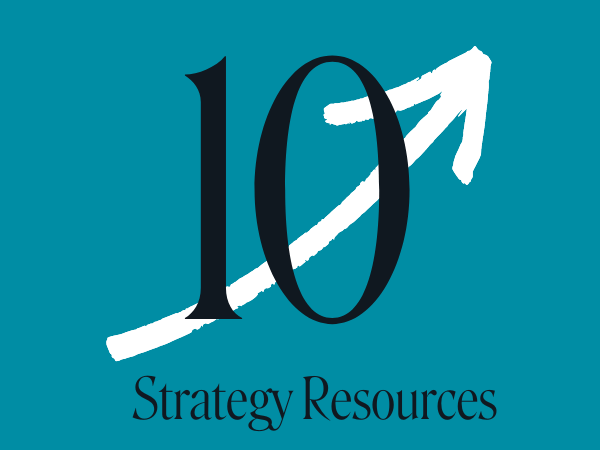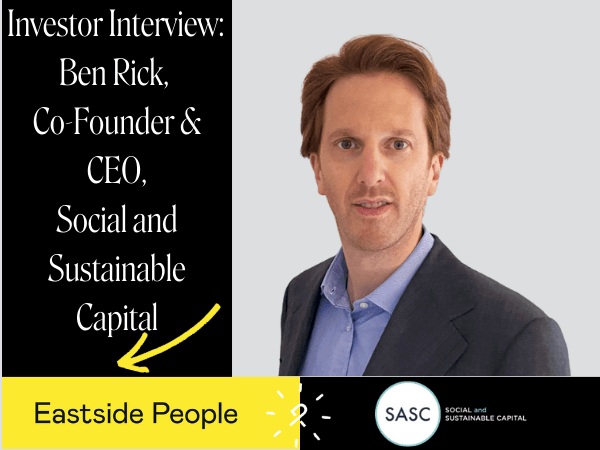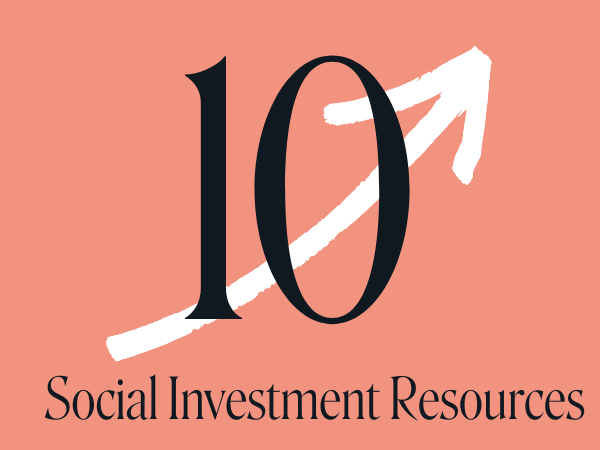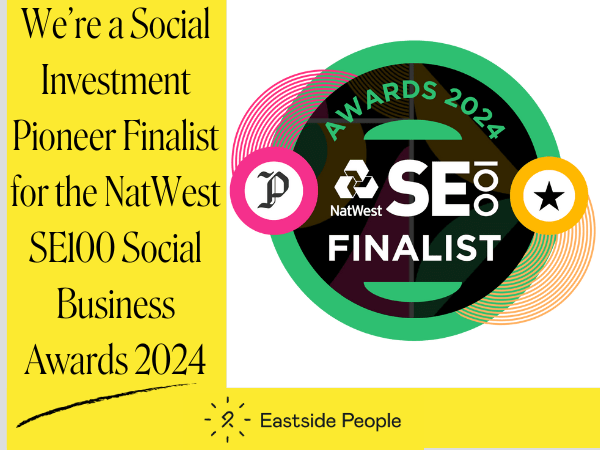Blog by Liz Lipscomb, Eastside People Consultant
Reviewing your charity’s fundraising strategy is vital in this economic environment. Looking critically at what works well and at areas for improvement is essential. In this blog you will learn about ten key areas that you should consider when planning your future fundraising. Eastside People can support your charity with your fundraising strategy and can help you access the biggest form of fundraising income after individual donations: grants from charitable trusts and foundations.
-
Grant-making by the top 300 family foundations is up 14% in 2022/3
Prior to Covid-19, charitable grant-making was worth around £8.8bn. Most recently charity grant-makers have bucked the downward trend in central government grant-making, with the top 300 foundations giving 14% more in 2022/3 than the previous year. Whilst total sector grant-making is a huge sum, competition for grants is incredibly strong. While larger charities often have dedicated trust and foundation fundraisers and professional bid writers, for the smaller charities with fewer staff and less capacity, bid writing AI tools are now available to help ease the process. There are also many free databases which help charities to target the grants that they are eligible for.
-
51% of charities were using reserves to cover core costs in 2022
In 2020, 68% of charities said that the one thing that would most help them is receiving funding for core costs. By 2022, 51% of charities were using their reserves to cover core costs, which was up from 40% the year before. During Covid-19 this became a more recognised need to fulfil and while there are some trusts and foundations willing to support charities in this way through grants, sadly there is not nearly as much available as for restricted funding.
-
£170.6m was distributed by Community Foundations in 2023
Looking locally for grants and funding opportunities is a useful approach, especially for small and medium charities. Often the biggest local opportunities are available through the network of community foundations: there are 47 and in 2023 collectively distributed £170.6m through 40,000 grants. Some corporate foundations also distribute community grants, and on a smaller scale some county councillors have discretionary grants available to local charitable organisations.
-
£4bn in interest on endowments was generated in 2024
Endowments offer charities stability and financial resilience, as once in place the interest from the capital can be used as unrestricted funding, reducing the need for emergency fundraising. In 2020/21, the top 300 foundations had £87.3bn in total assets (most of which were endowments), boosted by strong post-pandemic investment returns. We also know that for all registered charities in England and Wales the return on investment from endowments was over £4bn in June 2024. The benefit for the donor is that they have the reassurance that they are protecting a charity for the long-term.
-
The largest predicted fundraising growth area is fundraising events and activities
53% of charities surveyed said that their largest expected fundraising growth area was fundraising events and activities in 2024. The most often planned types of events were smaller events and social activities like bake-offs and pub quizzes (78%) and mass physical events organised by the charity (52%). A 2023 survey looking at mass events (e.g. marathons) found that 79% of runners entering major running events were doing so for charity. Fundraising events are great for younger supporters who cannot afford to give donations. However, charities should be aware that the biggest barrier identified by supporters to taking part in a charity event in 2023/24 was not liking asking people for money (41%).
-
53% of people in the younger generations are positive about supporting charities
There are four key generations of interest to charity fundraisers in 2024. The two oldest cohorts of the four are also the largest: Baby boomers who were born 1945-64 account for around 22% (14m) of the population and are reported to have around 50% more wealth than the older war baby generation.
Gen X were born 1965-80 and account for around 19% (13m) of the population and are similarly wealthy although this tends to sit in pensions rather than property. This generation is also experiencing the economic crisis more than Boomers. Millennials were born 1981-96. Gen Z were born 1997-09 and are our first generation which does not remember a time before the internet.
There is cause for optimism for fundraising in 2024, as it is the younger generations that are the most positive about supporting charities (53%). Gen Z often do not have much spare money that they can donate, and so tend to feel that their impact can come through volunteering or promoting a cause (often digitally). 33% volunteer in some way and one-third do expect to increase their giving in future.
-
Legacy donations are predicted to reach £6.5 bn by 2050
Legacy donations are a huge revenue source, rivalling grants in scale. They are often the largest charitable donation that a person will ever make, yet even with an ageing population not all charities are addressing this potential. In 2023, estimated total legacy income was at its highest point at more than £3.9bn, the growth is believed to be due to the Boomer generation now passing away. Looking ahead, growth is predicted – one report predicts a 25% growth in income in 2024 alone, and another forecasts a boost to £10bn by 2050, which will be fuelled by the Boomers and then Gen X.
-
14.2m people formally volunteered in 2021/2
Volunteering should be part of any fundraising strategy, not just for the extra support, but because it is valuable to engage those with not enough money to make donations. An estimated 14.2m in the UK formally volunteered through a group/club/organisation at least once in 2021/22. During The Big Give in June 2024, 6.5m people took part, with the young being more likely to be involved than other age groups. 40% of all participants said they were likely to participate in the future, and 60% of 18-34s said this. Comparing the UK with other countries, 26% volunteered time which ranks the UK at 58 out of 142 countries in the Charities Aid Foundation World Giving Index.
In 2023, 40% of volunteers said their primary motivation for volunteering is that they wanted to improve things/help people, and the most popular cause to volunteer for was local community/neighbourhood groups (21%). Volunteering is very much a route to gain long-term supporters.
-
£2bn has been donated through payroll giving since 1987
Payroll giving is an often-overlooked income stream, its more well-known tax effective cousin Gift Aid receives more focus. It is however a useful steady stream of income, with £128m donated in 2022 from 516,000 donors, and £2bn having been donated since 1987. Although payroll giving is generally in decline in terms of money given and participants, there are some key demographics that give cause for optimism: firstly, there are 30m people on PAYE who are eligible to give; and secondly, whilst young people (age 16-34 so Millennials and Gen Z) are least likely to have heard of payroll giving, they are more likely to want to use it if offered.
-
In the UK on average we spend 1hr 46m a day on social media
Social media can be used to improve reach, show impact, build communities and drive donations. By reaching your target audiences through the best channel and using tailored messaging there is more likelihood of attracting supporters. The percentage of each of the four generations saying that their main reason for using social media was to support/connect with good causes is close-run (Baby boomers 13%, Gen X 14%, Millennials and Gen Z 16% each).
Facebook: Great for bringing stories to life, building communities and publicising events. Most popular with Baby Boomers and Gen X
Linkedin: Ideal for networking and recruitment. Most popular with Baby Boomers and Gen X
X (Twitter): Good for communicating news, advocating your cause and engaging with people. Most popular with Millennials
Snapchat: Useful for word-of-mouth marketing. Most popular with Millennials and Gen Z for communicating with people they know
Instagram: Perfect for visual communication, getting donations and creating conversations. Most popular with Gen Z
TikTok: A place for creative storytelling and engaging in trends. 47% of users are under 30. Most popular with Gen Z
YouTube: Best for storytelling and generating donations through YouTube Giving. Most popular with Gen Z.
In conclusion:
Most charities have untapped opportunities that can be incorporated into a fundraising strategy. This blog shows there are clear opportunities including:
- Using bid-writing AI tools
- Accessing core funding streams
- Finding local grant opportunities
- Setting up an endowment
- Setting up fundraising events especially mass events
- Communicating to the generations in a targeted way with an emphasis on Gen Z
- Starting a legacy campaign
- Encouraging volunteering particularly with younger supporters
- Promoting payroll giving especially with the young
- Using the most appropriate social media channels.
Contact Eastside People if you would like to speak to us about support with your fundraising or income generation strategy.











